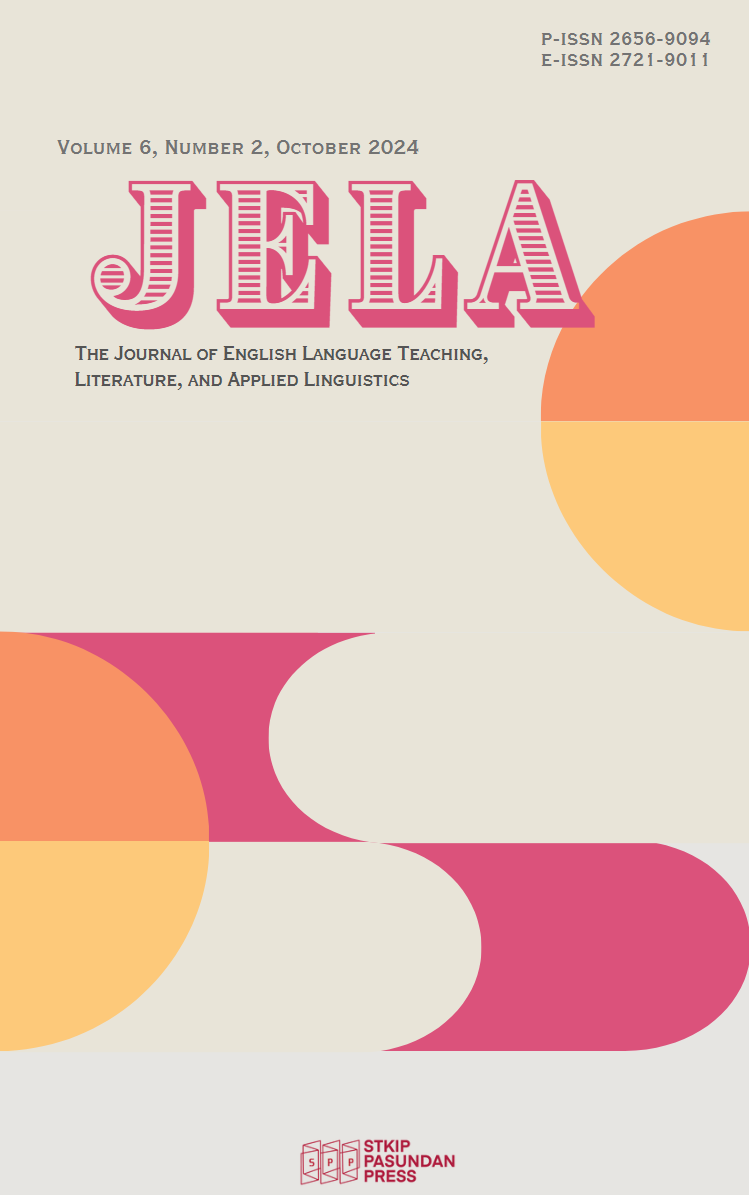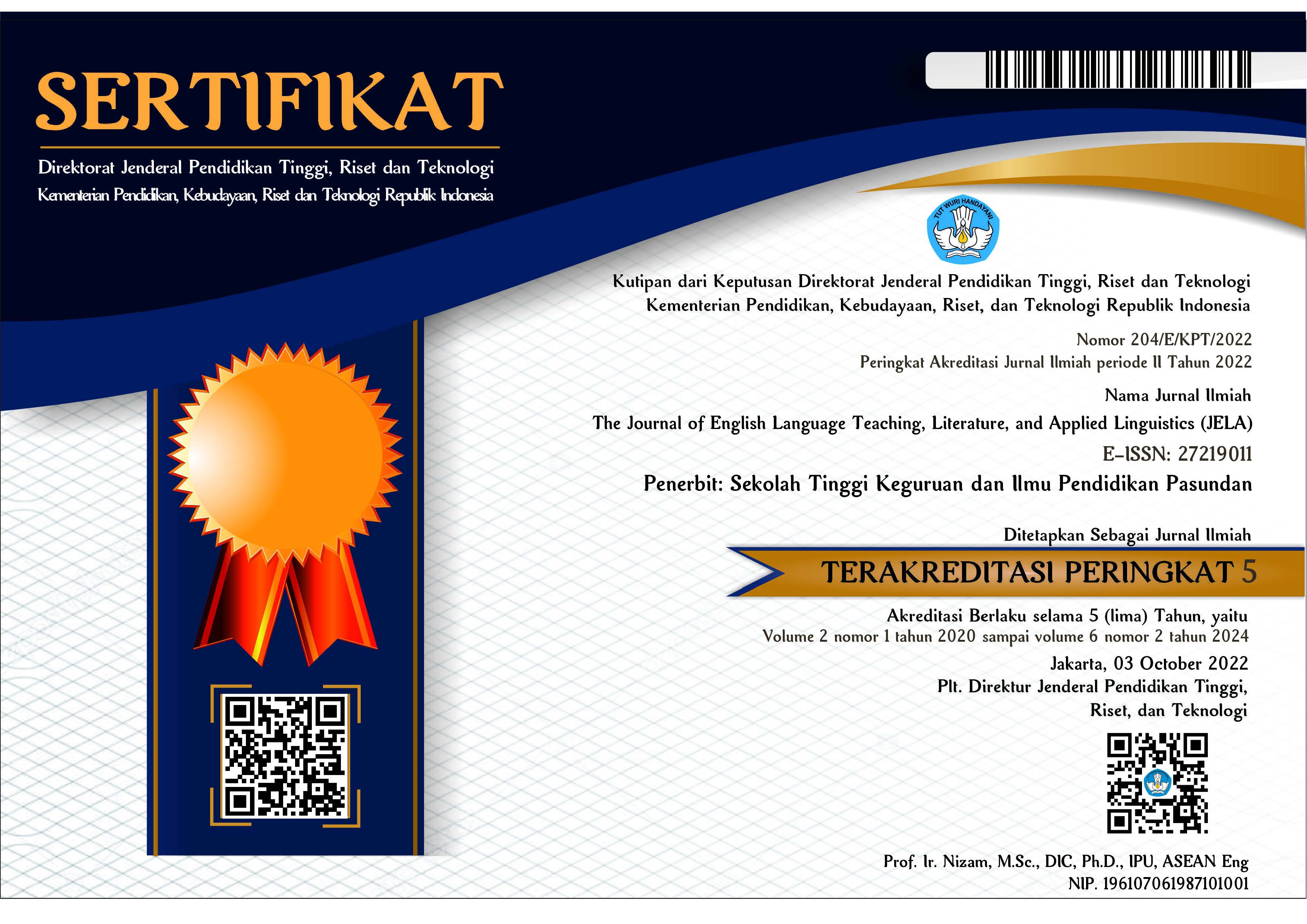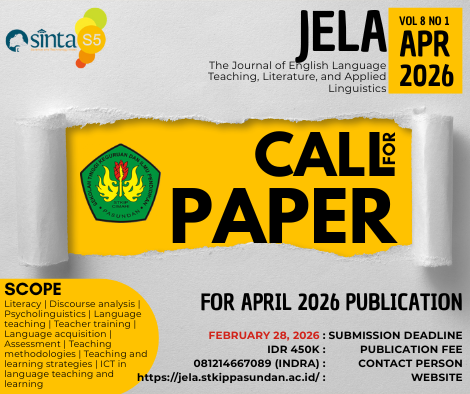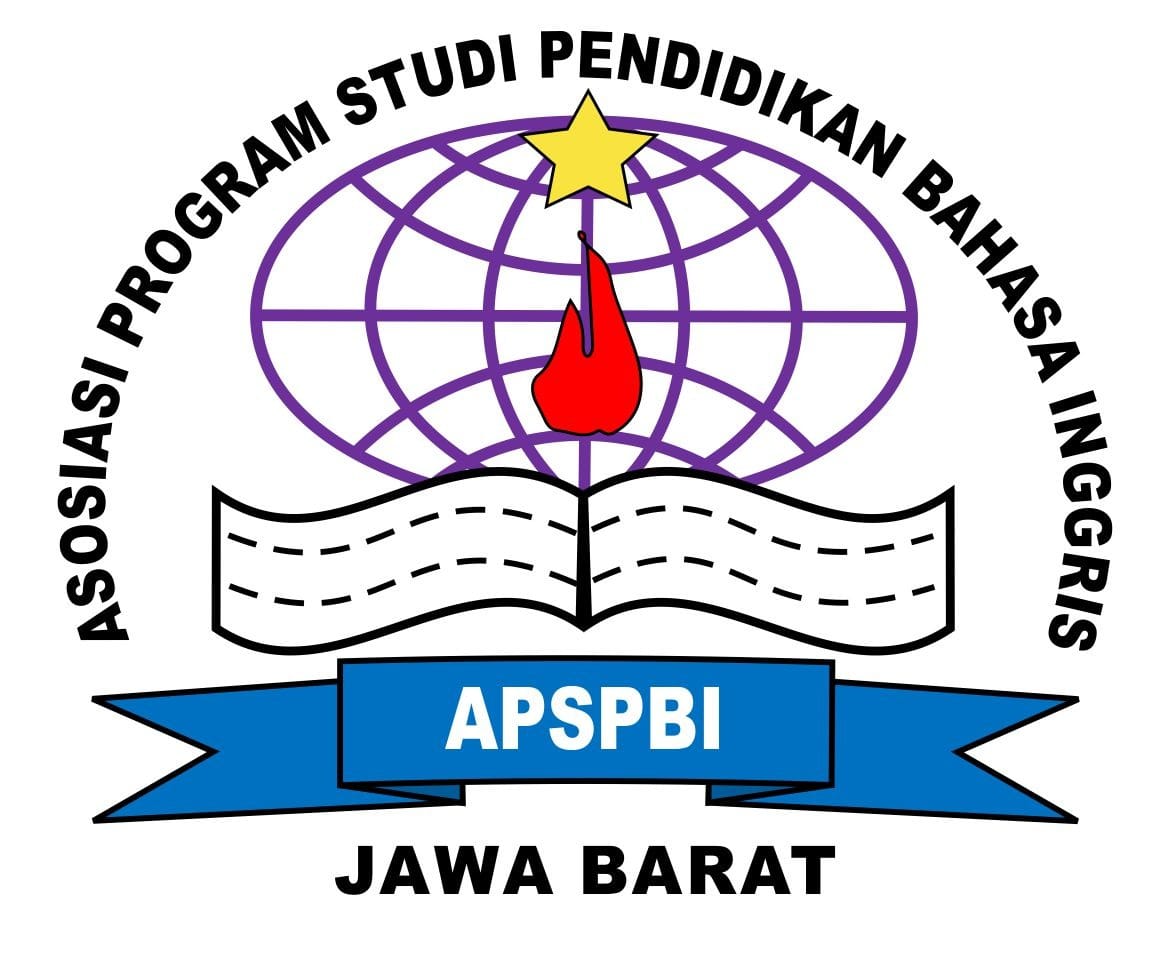SYSTEMIC FUNCTIONAL LINGUISTICS ANALYSIS OF LYRICAL POETRY
DOI:
https://doi.org/10.37742/jela.v6i2.132Abstract
This research investigated the potential of song lyrics as pedagogical tools for language and literature education through the lens of Systemic Functional Linguistics (SFL). Grounded in the premise that literature, particularly lyrical poetry, offers a rich context for developing vocabulary, grammar, cultural understanding, and communication skills (Griffiths, 2012), this study explores how songs, as a form of literary expression, can be harnessed for language learning. By focusing on the intricate relationship between language, literature, and song, this research aimed to elucidate the meaning-making processes within song lyrics through an SFL framework. Specifically, it examined the mood types, modalities, and interpersonal meanings present in a corpus of popular love songs to understand how these linguistic features construct meaning about love. This research was motivated by a gap in the existing literature regarding the application of SFL to song lyrics in a pedagogical context. Through a detailed analysis of grammatical choices and textual organization, this study sought to provide educators with valuable insights into the pedagogical potential of songs for enhancing language and literature learning. Employing a descriptive qualitative research design, the findings revealed that love songs effectively achieve their communicative goals through interpersonal meanings generated by mood and modality. Declarative mood, for instance, influences the addressee, while modality strengthens the connection between the song's persona and the audience, conveying nuanced meanings and qualifying the message. The study demonstrated how the interpersonal meanings of heartbreak and regret are constructed through the interplay of mood and modality in the lyrics, underscoring the transformative potential of songs in language and literature education. Keywords: Lyrical Poetry; Interpersonal Meaning; Systemic Functional Linguistic.










